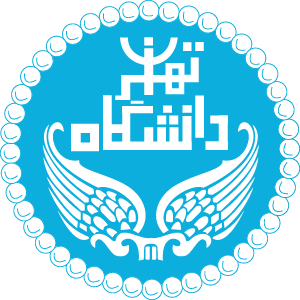Amir Hossein Pakseresht
Amir Hossein Pakseresht Mechanical Engineer Skills Energy systems modeling Design and model rigid bodies Solar systems modeling Education Bachelors in Mechanical Engineering Kermanshah University of Technology Fields of interest Multigeneration systems, Solar energy, Solar still desalination Articles
Zahra Ahmadian
Zahra Ahmadian Mechanical Engineer About Hi! My name is Zahra, and I’m a mechanical engineer passionate about energy systems. I’m pursuing a Master’s degree in Energy Conversion, where I’m learning about the latest technologies and techniques for optimizing energy systems to improve their efficiency and sustainability. I’m also proficient in using the EES (Engineering Equation […]
Modeling and multi-objective optimization of a novel biomass feed polygeneration system integrated with multi effect desalination unit

This paper mainly focuses on the design and optimization of a novel integrated system to meet fresh water, electricity, and hot water demands. A novel combination of different system is used to generate multi products. The exergy and economic analyses are combined to carry out a parametric study to find the impact of main decision variables on a polygeneration system. The exergy analysis reveals that combustion chamber and gasifier have the highest exergy destruction rates with 84% of the system total exergy destruction rate. In addition, the system exergy efficiency shows that in the initial state, the exergy efficiency of polygeneration system is 27.9%. Results show that an increment in the gasification temperature from 950 K to 1150 K leads to fresh water flow rate increases from 1060 m 3/day to 1160 m 3/day. The parametric study of the system reveals that the defined objective functions are highly depends on …
Performance assessment of an innovative exhaust air energy recovery system based on the PV/T-assisted thermal wheel

This research work aims to assess the performance of an innovative exhaust air energy recovery system consisting of a building integrated photovoltaic/thermal (BIPV/T) and a thermal wheel (TW). This BIPV/T-TW system has two main operating modes, namely winter and summer. The exhaust air is used for pre-heating and pre-cooling the ambient fresh air through a TW in the winter and summer modes of operation, respectively. Besides, the pre-heated fresh air (in the winter mode) and the heated exhaust air (in the summer mode) is used for reducing the temperature of PV panels and consequently improving their electrical efficiency. The electrical and thermal performance of the system is calculated and compared with those of the conventional BIPV/T and TW systems. Besides, a performance evaluation criterion (PEC) is defined in this study to investigate the overall performance of the studied systems. The results …
Energy analysis and multi-objective optimization of a novel exhaust air heat recovery system consisting of an air-based building integrated photovoltaic/thermal system and a thermal wheel

This paper presents a feasibility investigation of integrating an air-based photovoltaic/thermal (PV/T) system with a thermal wheel (TW) system for residential applications. The innovative system is capable of pre-heating/pre-cooling the ambient fresh air in winter/summer as well as producing electricity. The performance of the system is numerically evaluated and compared with the conventional building integrated PV/T (BIPV/T) and TW systems. Then, a multi-objective optimization approach is utilized to find the optimum values of geometric and operating parameters in order to maximize the annual average effectiveness of the TW and the first-law efficiency of the BIPV/T collector. The performances of the optimized and un-optimized BIPV/T-TW systems are compared for a complete year. The results demonstrated that the BIPV/T-TW system has a better thermal performance compared with the BIPV/T and TW systems …
Thermoeconomic modeling and multi-objective evolutionary-based optimization of a modified transcritical CO2 refrigeration cycle

In this study, thermoeconomic optimization is applied to a modified transcritical (CO 2) refrigeration cycle. Modified cycle includes an extraction of saturated vapor as a coolant stream from the separator feed to the intercooler. In order to perform multi criteria optimization two objective functions consist of cooling capacity and annual cost rate are chosen. Gas cooler temperature (T gc), gas cooler pressure (P gc), extraction mass flow rate (α) and evaporator temperature (T ev) are selected as decision variables based on parametric study. The thermodynamic and economic modeling of the system is performed. To determine analytical, objective functions GMDH (group method of data handling) neural network method is used and finally with a developed code in Matlab optimal values of decision variables have been obtained. In addition, to better understanding the change of decision variables in optimum point, the …
Scenario-based multi-objective optimization of an air-based building-integrated photovoltaic/thermal system

In this paper, a genetic algorithm-based multi-objective optimization of a building-integrated photovoltaic/thermal (BIPV/T) system is carried out to find the best system configurations which lead to maximum energetic and exergetic performances for Kermanshah, Iran climatic condition. In the proposed BIPV/T system, the cooling potential of ventilation and exhaust airs are used in buildings for cooling the PV panels and also heating the ventilation air by heat rejection of PV panels. Four scenarios with various criteria in the form of system efficiencies and useful outputs are considered to reflect all possible useful outputs in the optimization procedure. This study models a glazed BIPV/T system with various collector areas () and different length to width ratio () to determine the optimum air mass flow rate, bottom heat loss coefficient, depth of the channel as well as the optimum depth …
Experimental energy and exergy analysis of a flat plate solar water heater (SWH) to find optimum collector mass flow rate

This paper presents the experimental study of a flat plate solar collector to find the optimum flow rate of collector with variation of daily solar radiation intensity. The procedure of ASHRAE standard was used for testing the thermal performance of flat-plate solar collector. Results show that using optimal collector flow rate can improve energy and exergy efficiency of SWH. Furthermore, results show that in no load on storage tank overall energy efficiency can improve between 0.25 % and 7 %. In addition, calculations show an increment between 0.18 % and 1.12% for overall exergy efficiency. In the 36 L/h, and 52 L/h and 72 L/h thermal load on storage tank overall energy and exergy efficiency show a reasonable increment with using optimum flow rate of collector. Finally, these experimental analysis results can be a base for design a collector flow rate controller to have a more efficient SWH.
Energy and exergy analysis and multi-objective optimization of an air based building integrated photovoltaic/thermal (BIPV/T) system

The objective of the present work is to investigate the improvement in the energetic and the exergetic performances of glazed and unglazed building integrated photovoltaic/thermal (BIPV/T) systems with the help of multi-objective optimization based on Genetic Algorithm (GA) for Kermanshah, Iran climatic condition. In the proposed BIPV/T system, the cooling potential of ventilation and exhaust airs is used for cooling the photovoltaic (PV) panels and also heating the ventilation air by heat rejection of PV panels. The performance evaluation criteria comprise the first and second law efficiencies. Initially, a multi-objective optimization approach is used to find the optimum values of the geometric parameters and air mass flow rate which maximize the annual average first and second law efficiencies. In the second step, the performances of the optimized and un-optimized BIPV/T systems are evaluated and compared for a …
Exergoeconomic analysis and multi objective optimization of a solar based integrated energy system for hydrogen production

In the current study, an integrated renewable based energy system consisting of a solar flat plate collector is employed to generate electricity while providing cooling load and hydrogen. A parametric study is carried out in order to determine the main design parameters and their effects on the objective functions of the system. The outlet temperature of generator, inlet temperature to organic Rankine cycle turbine, solar irradiation intensity (I), collector mass flow rate (m˙ c o l) and flat plate collector area (A P) are considered as five decision variables. The results of parametric study show that the variation of collector mass flow rate between 3 kg/s and 8 kg/s has different effects on exergy efficiency and total cost rate of the system. In addition, the result shows that increment of inlet temperature to the ORC evaporator has a negative effect on cooling capacity of the system. It can lead to a decrease the cooling capacity from …
